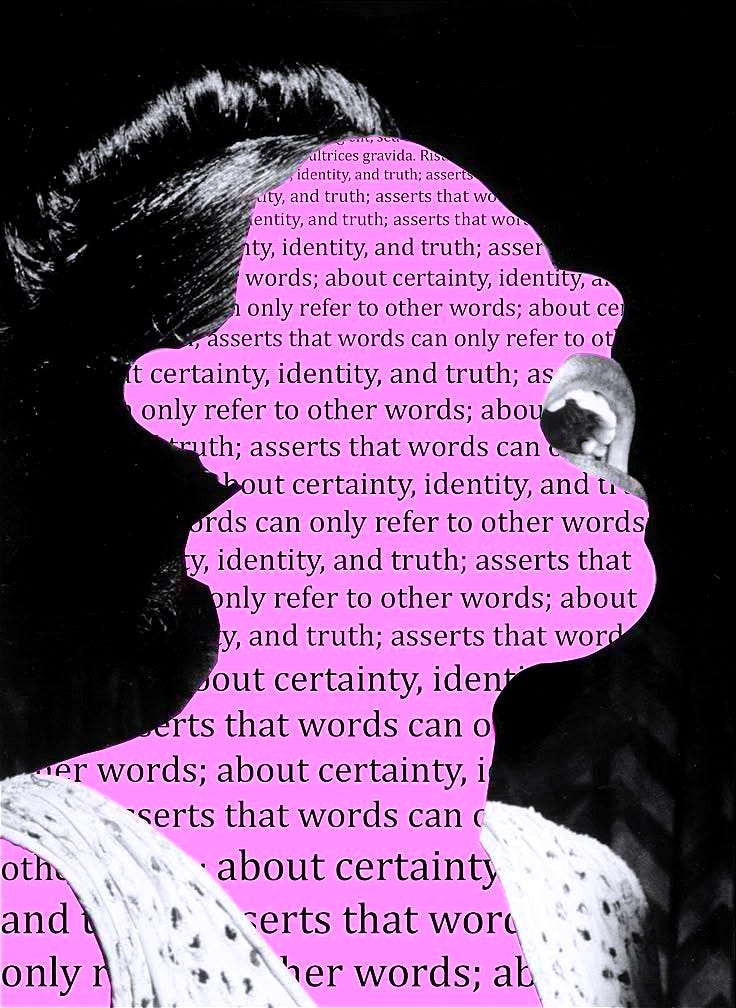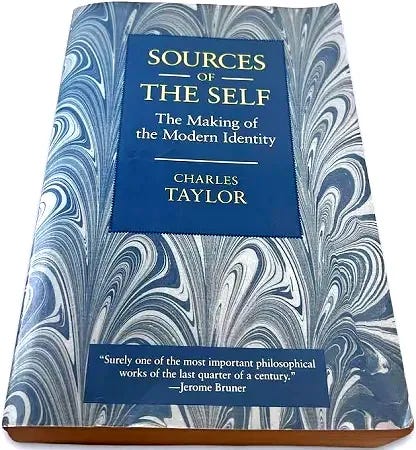THE ARCHITECTURE OF IDENTITY
How Charles Taylor Exposed the Modern Soul's Collapse - and Why America Is Living His Prophecy
Listen While You Read: “Paradise Circus” by Massive Attack
I. THE MORAL DISORIENTATION OF THE MODERN MIND
Charles Taylor wrote Sources of the Self in 1989, back when humanity still believed that progress had a steering wheel. He was diagnosing something most people couldn’t yet name: the spiritual vertigo of modernity. He saw a civilization unmoored from the old constellations of meaning, trying to build a moral compass out of shattered mirrors. In his words, the self needs “orientation in moral space”— but ours has become a labyrinth of flickering screens and contradictory signals.
Taylor’s question lingers like static in the American psyche: if freedom is our highest value, why does it feel like drowning? We’re free to reinvent ourselves infinitely, yet our stories collapse under the weight of their own self-creation. The old gods are dead, the new ones are algorithms, and the temples are glowing rectangles we hold in our palms.
America, in 2025, is the final experiment in Taylor’s nightmare and his prophecy. The moral vocabularies that once grounded identity—religion, community, shared truth—have been pulverized into “content.” The result is an entire civilization experiencing an existential language disorder.
II. THE CARTESIAN GHOST: AMERICA AND THE CULT OF THE PUNCTUAL SELF
Taylor traced this pathology back to Descartes, who declared I think, therefore I am—and in doing so, amputated the self from the world. From that philosophical surgery emerged the “punctual self,” a pure point of consciousness, detached and floating above experience.
America turned that ghost into a national religion. The cult of the self-made man, the bootstrap fantasy, the influencer gospel of “branding yourself”—they’re all descendants of Descartes’ lonely rationalist dream. We built a civilization around the idea that you can construct meaning the same way you build a startup: through effort, optimization, and hustle.
But there’s a crack in the operating system. The more we chase autonomy, the most isolated we become. Taylor would call them “identity orphans”—people free to be anything, but with no reason to be anyone. The result? Epidemics of anxiety, performative authenticity, and chronic spiritual malnutrition. A nation of souls starving at the all-you-can-eat buffet of freedom.
III. THE AUTHENTICITY TRAP: EXPRESSIVISM AS PERFORMANCE ART
The modern self, Taylor argues, took a turn toward “expressivism": the Romantic belief that you discover truth by expressing your inner essence. “Be yourself,” says every T-shirt, brand campaign, and TED Talk. But who exactly is that self when it’s built out of hashtags and dopamine hits?
In America’s digital theater, authenticity has become the new conformity. Every post is an act of self-construction, a performance of sincerity optimized for engagement. The individual becomes a brand ambassador for their own existence. Taylor saw it coming: authenticity, stripped of moral grounding, becomes empty self-affirmation.
We no longer ask what’s true—we ask what resonates. The politics of identity, the cult of self-expression, even the moral outrage economy—they’re all attempts to anchor meaning in a world that’s lost the coordinates of the sacred. Recognition becomes the new religion, and every believer is their own priest.
IV. THE ECLIPSE OF TRANSCENDENCE: GOD AS AN ALGORITHM
Taylor mourned what he called “the eclipse of transcendence”—the loss of anything greater than ourselves to orient meaning. Once, the self was a small note in a comic symphony. Now, it’s the only instrument left, looping endlessly.
The modern American believes in “energy,” “the universe,” and “manifestation”—all safe, customizable stand-ins for the divine. Even religion has gone consumerist: a curated playlist of beliefs that “resonate with your journey.” The sacred has been domesticated into wellness.
And with transcendence gone, everything temporal starts to suffocate. Love has to be eternal. Work must be a calling. Leisure becomes productivity in disguise. Time itself is flattened into an endless scroll—homogenous, empty, and fast. Rituals are replaced by algorithms, reflection by reaction. We’re living in Taylor’s “immanent frame,” where the ceiling of heaven has collapsed into the touchscreen glow of immediacy.
V. THE WAR OF HYPER-GOODS: AMERICA’S CULTURE WAR AS MORAL SCHIZOPHRENIA
Taylor’s idea of “hyper-goods”—the ultimate moral anchors people organized their lives around—explains the American schism perfectly. Freedom versus order. Authenticity versus tradition. Equality versus excellence. Each camp worships a different moral sun, and both believe the other threatens life itself.
The culture wars are theological disputes between rival moral universes. Conservatives defend transcendence; progressives defend liberation. But both, Taylor would say, suffer from “moral inarticulacy.” They feel deeply but speak shallowly. Righteous certainty without philosophical depth. Passion without articulation. Everyone’s shouting; no one’s conversing.
America has become a Babel of hyper-goods, where each moral language renders the other unintelligible. What we call polarization is really a metaphysical fracture—one nation under competing gods.
VI. THE ALGORITHMIC SELF: EXCARNATION IN REAL TIME
Taylor’s “excarnation”—the stripping of meaning from embodied experience—has found its final form in the digital self. The algorithm is the new confessional booth. It knows your desires better than you do, and it shapes your sense of self through invisible feedback loops.
Social media sells the illusion of expression but delivers surveillance. You’re not being yourself online—you’re performing data for the machine. The likes, the comments, the metrics—they replace genuine resonance with quantified validation.
The self becomes a spreadsheet. The human soul becomes content inventory. Taylor warned of the dangers of a purely instrumental rationality colonizing meaning, but he never saw TikTok coming—a civilization where attention has replaced contemplation as the supreme value.
VII. THE RETRIEVAL: RELEARNING HOW TO MEAN
Taylor wasn’t a cynic. He believed modernity’s sickness came with moral potential—if we had the courage to retrieve our lost sources of meaning. Retrieval doesn’t mean going backward. It means remembering forward: bringing the sacred, the communal, and the transcendent back into conversation with the modern self.
We need new moral languages. Ones that go deeper than “vibes” and “values.” Ones that recover the grammar of worth, purpose, and belonging. We need to rebuild institutions—not just political but poetic—that can teach us how to argue, not just perform.
Taylor’s prescription is quiet but radical: conversation. The rediscovery that selfhood isn’t a solo act but a dialogue between inheritance and invention. Between past and future. Between what we are and what we could be.
VIII. CODA: THE SELF AS A BURNING QUESTION
Taylor’s great insight remains our unfinished task: the self is not a possession. It’s a pursuit. It’s what happens when consciousness wrestles with history and refuses to be flattened into code.
In a culture where everything is curated, monetized, and optimized, the simple act of articulating meaning—without irony, without branding—is a rebellion. To have a soul that resists automation may be the last revolutionary act left.
The architecture of identity is collapsing, yes—but maybe the rubble is fertile. Maybe what grows from it will be the first honest conversation we’ve had in centuries about who we are, what we love, and why it matters to stay human.
Recommended Reading:
Sources of the Self: The Making of the Modern Identity by Charles Taylor




